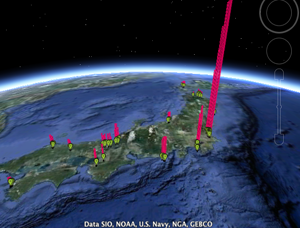The Washington Post: Chico Harlan and Brian Vastag, Sunday, March 27,
TOKYO — Already-grave conditions at the Fukushima Daiichi nuclear plant worsened Sunday with the highest radiation readings yet, compounding both the risks and challenges for workers trying to repair the facility’s cooling system.
Leaked water sampled from one unit Sunday was 100,000 times more radioactive than normal background levels — though the Tokyo Electric Power Co., which operates the plant, first calculated an even higher, erroneous, figure that it didn’t correct for several hours.
Tepco apologized Sunday night when it realized the mistake; it had initially reported radiation levels in the leaked water from the unit 2 reactor as being 10 million times higher than normal, which prompted an evacuation of the building.
After the levels were correctly measured, airborne radioactivity in the unit 2 turbine building still remained so high — 1,000 millisieverts per hour — that a worker there would reach his yearly occupational exposure limit in 15 minutes. A dose of 4,000 to 5,000 millisieverts absorbed fairly rapidly will eventually kill about half of those exposed.
(Full story in links below)




Recent Comments